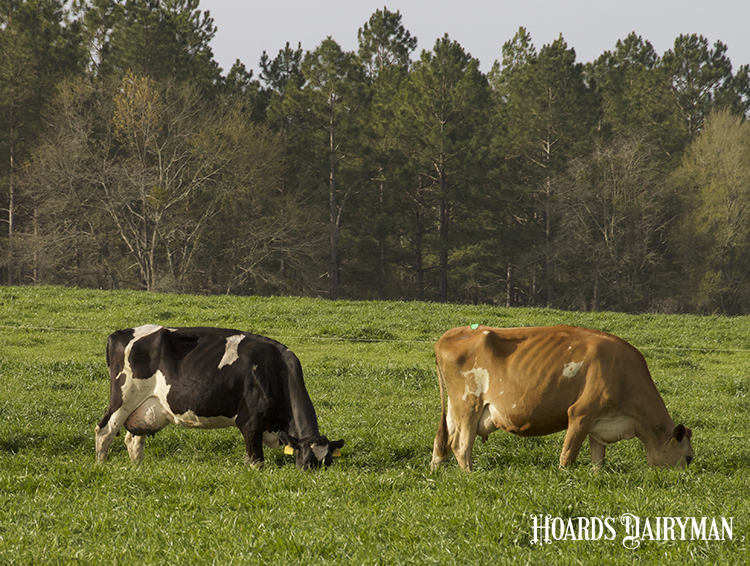
Milk is the most important commodity produced on a dairy farm, and both quality and quantity of that product matter to the farm’s success. This is true for every kind of dairy — from small to large, conventional to organic, confinement to grazing.
For grazing cattle specifically, their outdoor environment may mean different steps need to be taken to account for udder health and for production changes due to forage availability or weather. In the March 2022 issue of Hoard’s Dairyman, we asked four grazing dairies from coast to coast about all aspects of their production systems. You can learn more about their farms on pages 138 to 140 of that issue. Here’s how they answered the questions “How does your milk production change throughout the year?” and “How do you maintain milk quality?”
Clover Patch Jerseys (Millersburg, Ohio): Milk production is fairly steady except for the seasonal variation in cow numbers due to our seasonal calving (February through June and October through November). We milk 2x in a double-20 lowline parlor. Milk quality is maintained by keeping cows clean, doing a full prep in the parlor, culling problem cows, using effective dry treatment, and using a mastitis vaccine.
GreenGold Dairy (Nehalem, Ore.): We don’t lose a lot of production with weather events at all. Our average temperature in August is 70°F, and it’s like that almost every day through the summer. We don’t have many issues with heat stress. If that is happening, we’ll make sure the cows are in an area with some trees. We milk 2x in a double-20 swing parlor throughout the season.
Milk-A-Way Dairy and K&H Dairy (Webster, Fla.): Our milk production fluctuates about 15% over the year. From July to September, our production is at its lowest, and it climbs from October through March and plateaus from April to June. We milk 2x in parabone parlors, although the number of cows milking changes with the seasonal calving schedule. We breed from about December 20 to October 15 so no cows calve during the hottest time of the year.
Maintaining consistent milk quality in the tropical Florida climate can be a challenge. It is a combination of lane and field management to keep the environment as clean as possible so cows are clean and dry coming in for milking. Our cooling ponds are a big help in that they allow cows to be clean coming to the barn. We follow proper milking procedures and try to keep milking equipment in good condition. Finally, we use a good teat dip and sometimes a barrier dip as needed.
We test milk monthly. This has also helped maintain our milk quality and given us the ability to incorporate selective dry cow therapy into our system.
Prairie Star Farm (Waukon, Iowa): We see an increase in milk production when cows go on feed in the winter and then in the spring when we return to grass and have used up our best feed. We milk on the same schedule year-round in a double-10 rapid exit parlor with SCR equipment.
Pre- and postdips are used to contribute to teat health and milk quality. Controlling flies is a challenge when it comes to maintaining a low somatic cell count (SCC) in the summer. We have installed a fly-vac, which has helped with this problem.








